Part 24: Act One Chapter Twenty-One - Orcs (For other uses, see Orc (disambiguation))
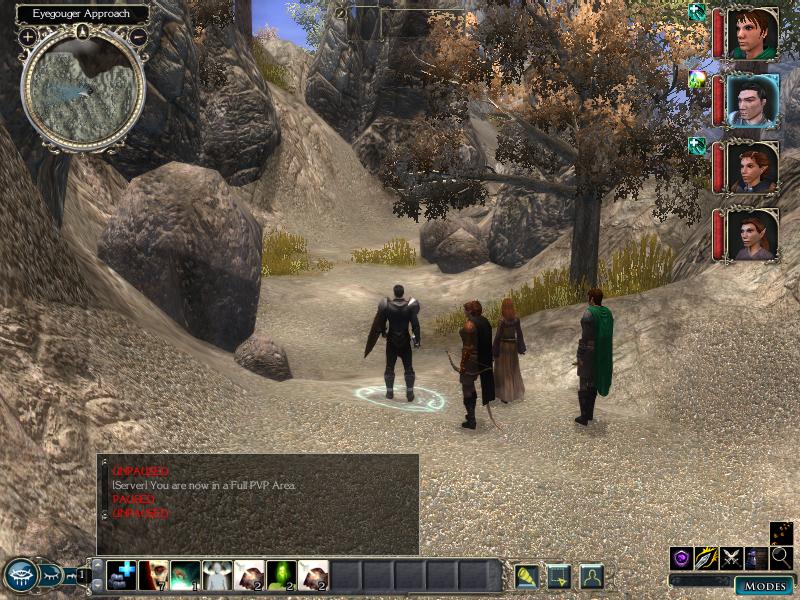
Orc (/ɔɹk/) is a word used to refer to various races of tough and warlike humanoid creatures in various fantasy settings, appearing originally in the
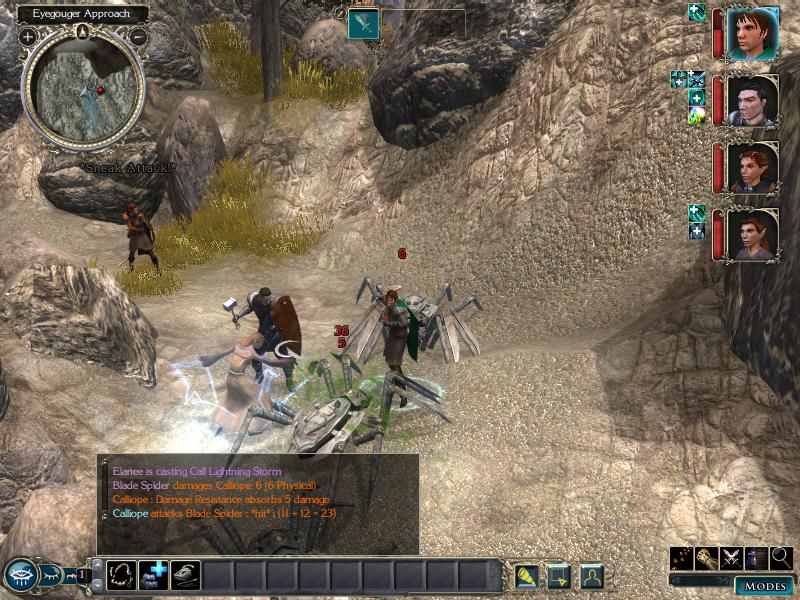
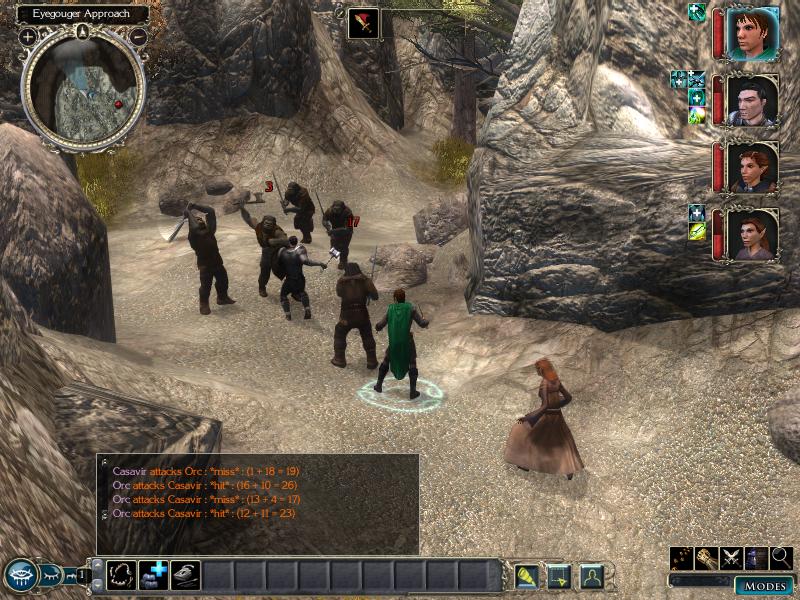
They are variously portrayed as physically stronger or weaker than humans, but always high in numbers. They often ride boars, wolves and wargs. In ma
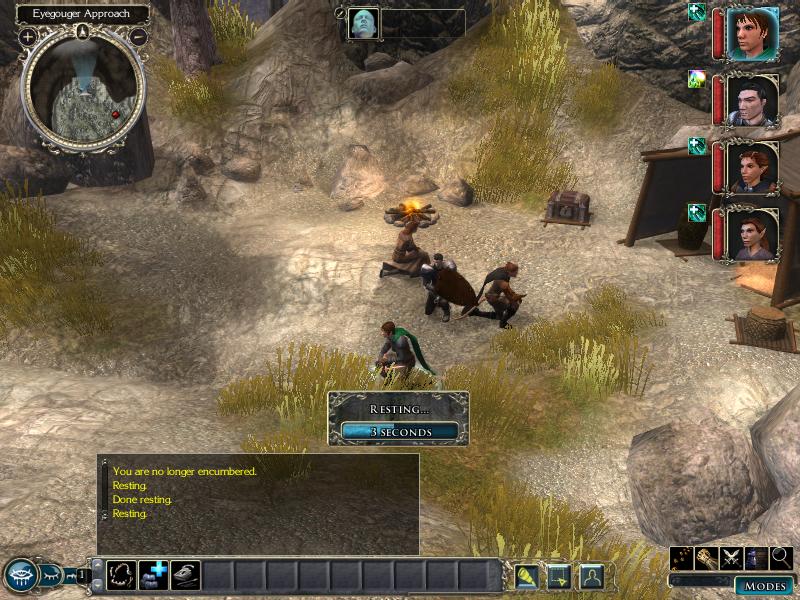
The modern use of the English word "orc" to denote a race of evil, humanoid creatures begins with J. R. R. Tolkien. Tolkien's earliest elvish diction
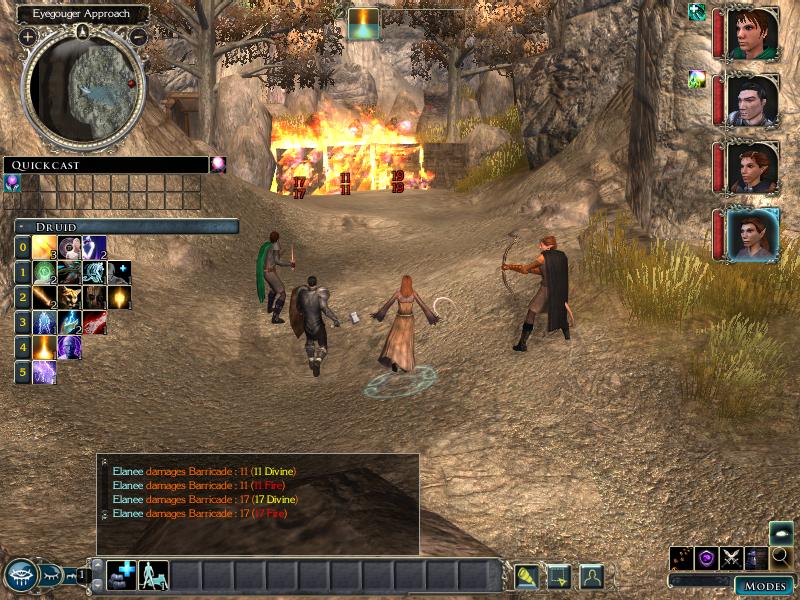
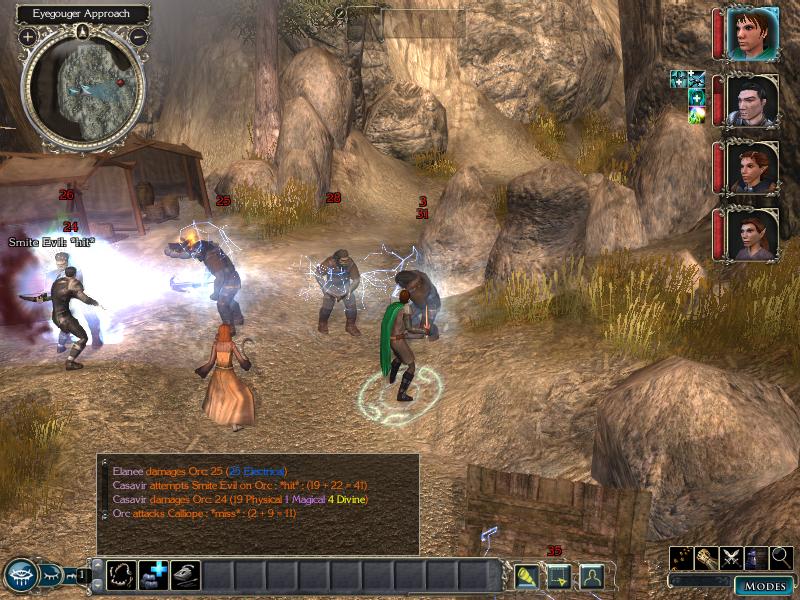
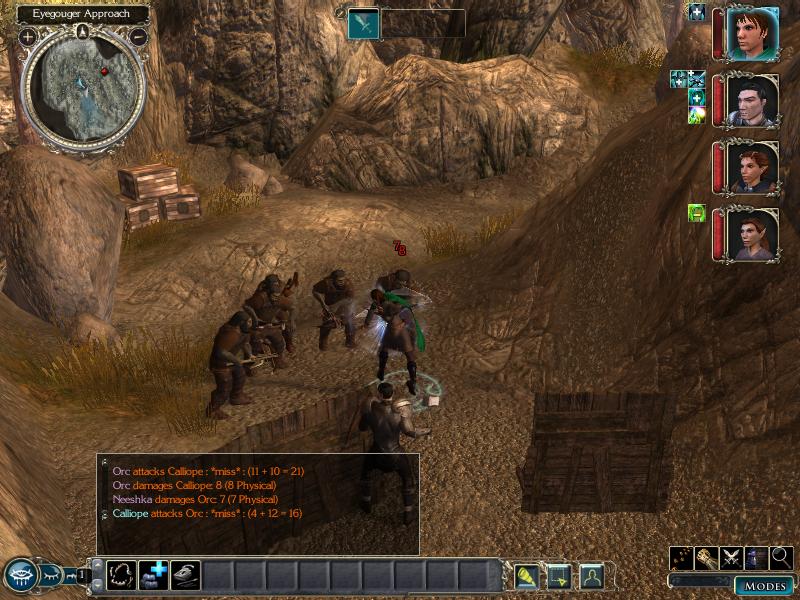
Tolkien sometimes, particularly in The Hobbit, used the word "goblin" instead of "orc" to describe the same type of creature, with the smaller cave-
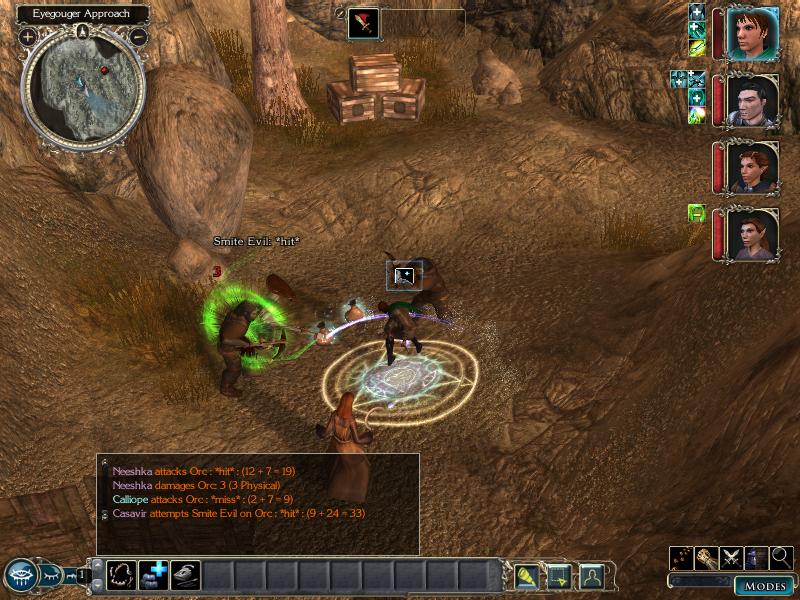
Later in his life he expressed an intention to change the spelling of "orc" to "ork" in The Silmarillion[3] but the only place where that spelling s
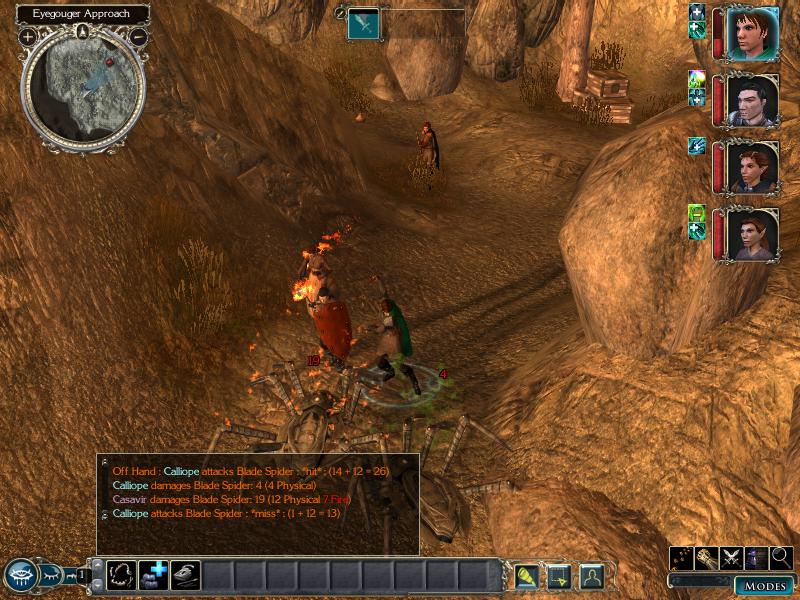
The word *orcné (attested in the plural orcnéas) is a hapax legomenon in the poem Beowulf. It is generally supposed to contain an element -né, cogna
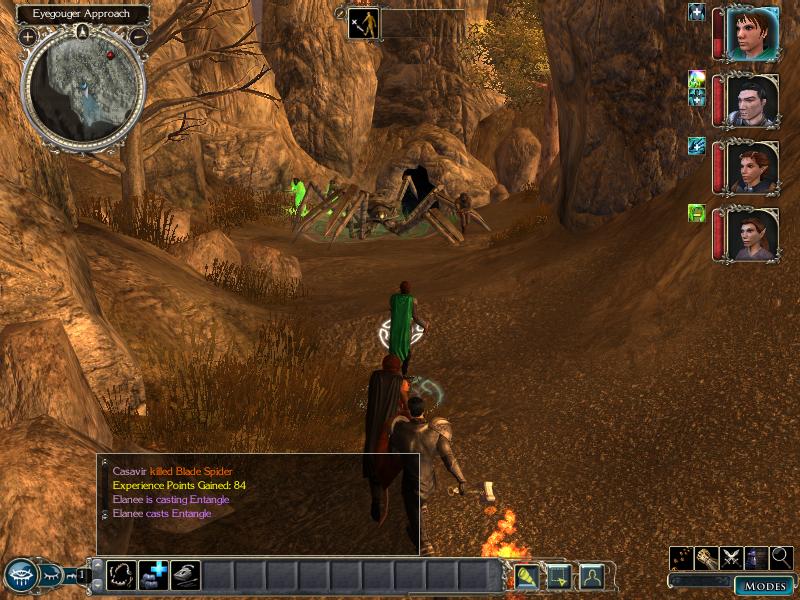
This etymology is plausible, but remains conjectural. The word orc appears in two other locations in Beowulf, but in both cases refers to cups of pr
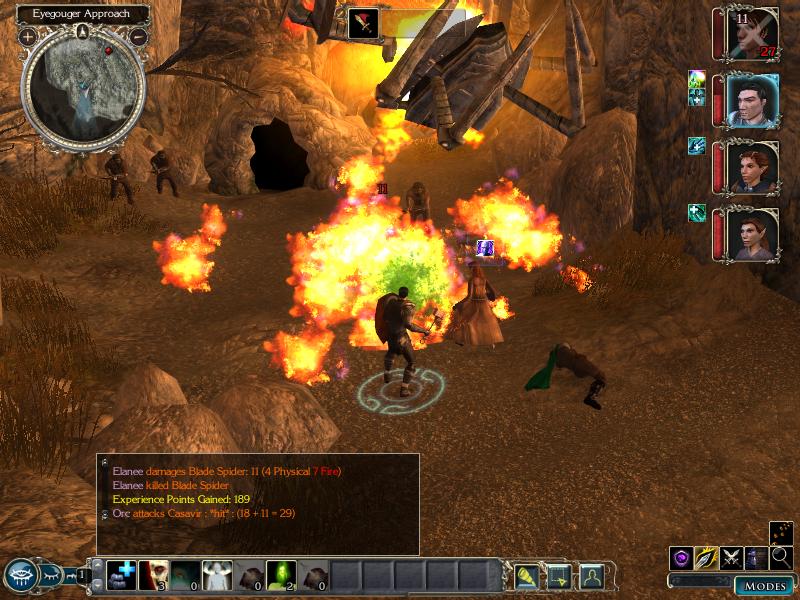
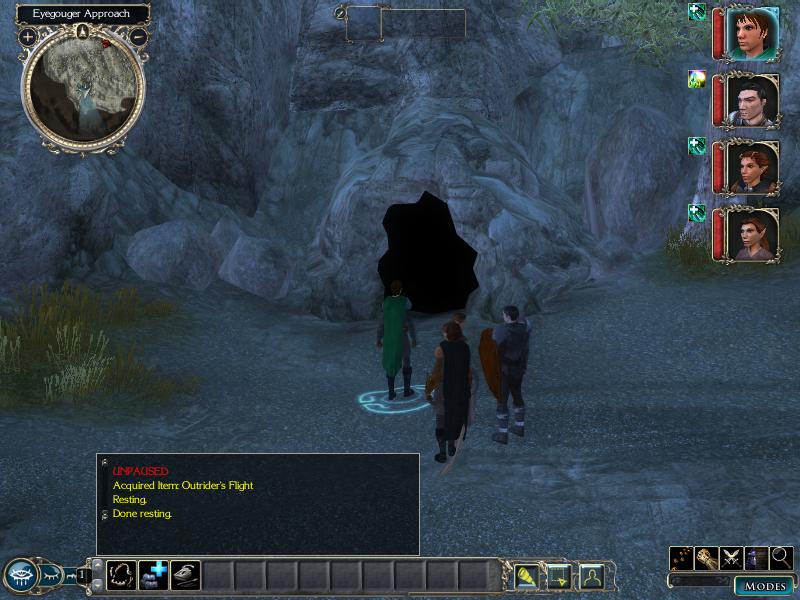
Old English þyrs, given as a gloss for Latin orcus, is cognate to Old Norse þurs "giant, ogre" (both from Common Germanic *thurisaz, in Norse mytholo
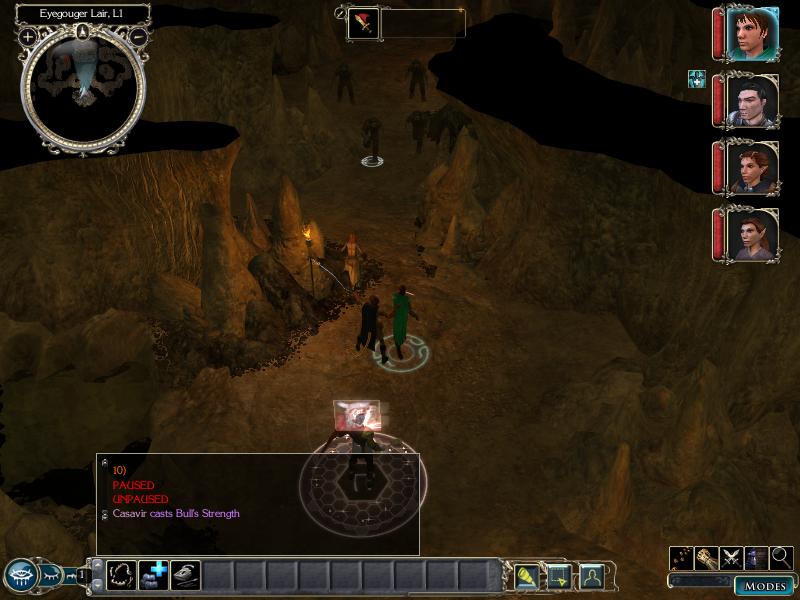
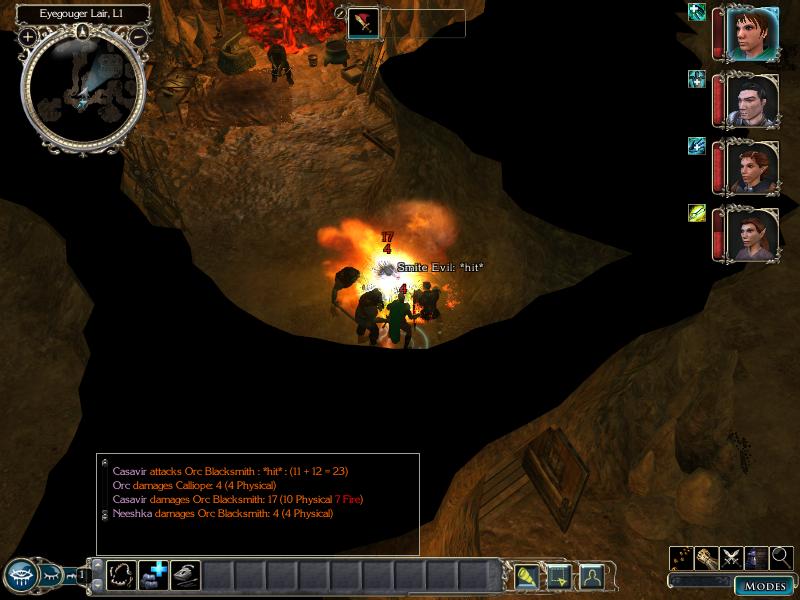
Whether 'orke', 'ogre', 'huerco' or 'orco', the word ultimately comes from Latin Orcus, the name of the Roman god of Death, a demonic/grim reaper-es
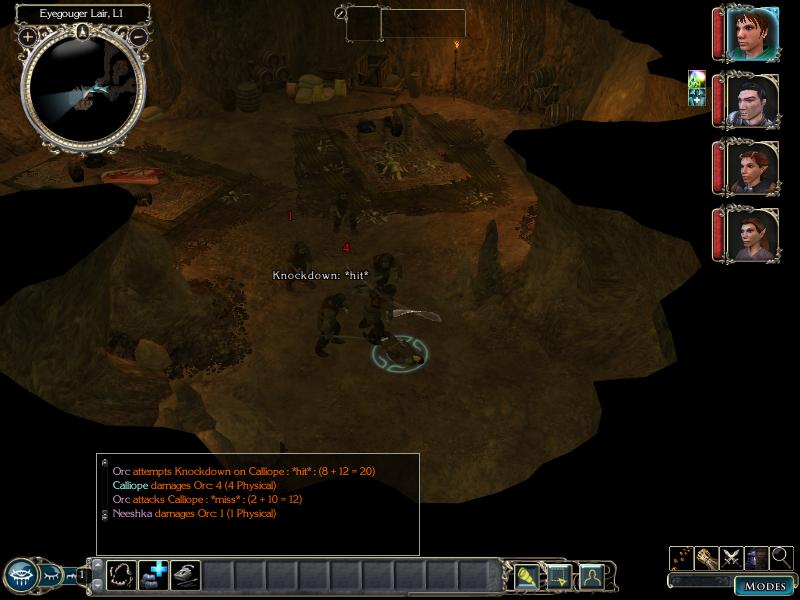
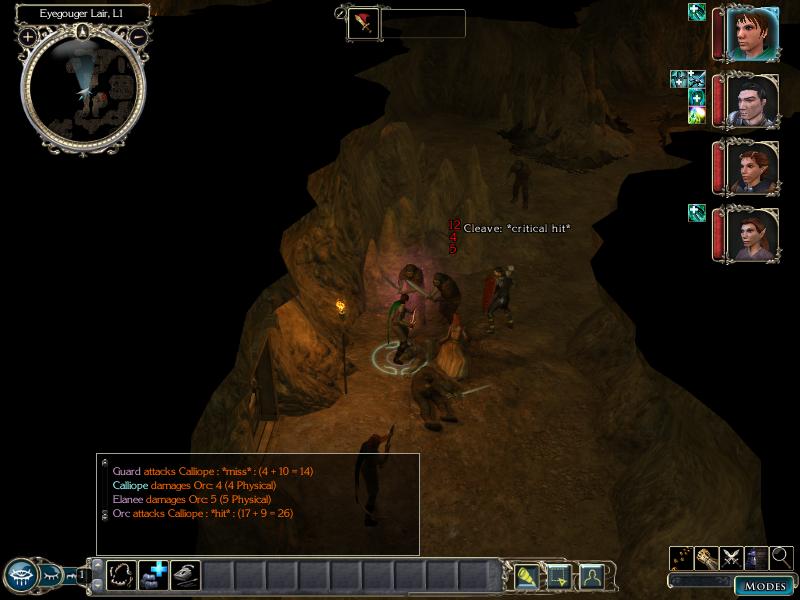
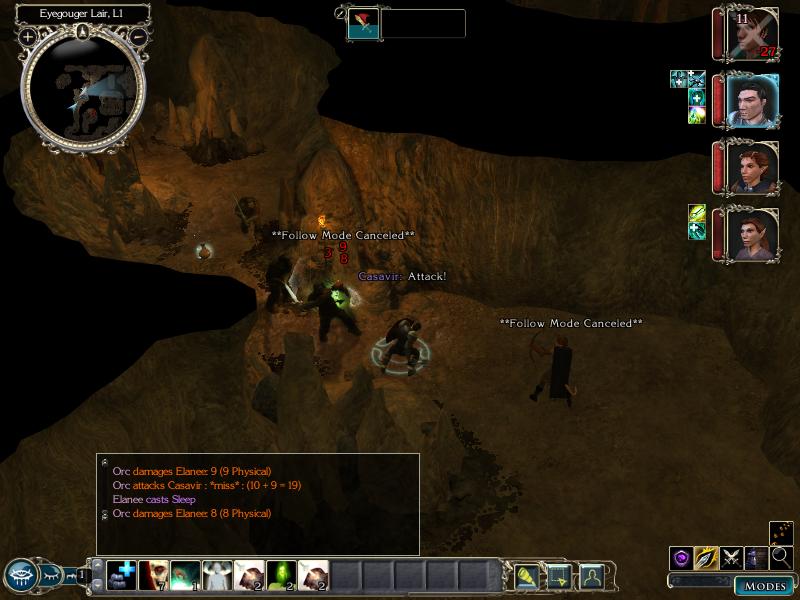
Within Tolkien's invented languages, the Elvish words for "orc" are derived from a root ruk referring to fear and horror, from which is derived an ex
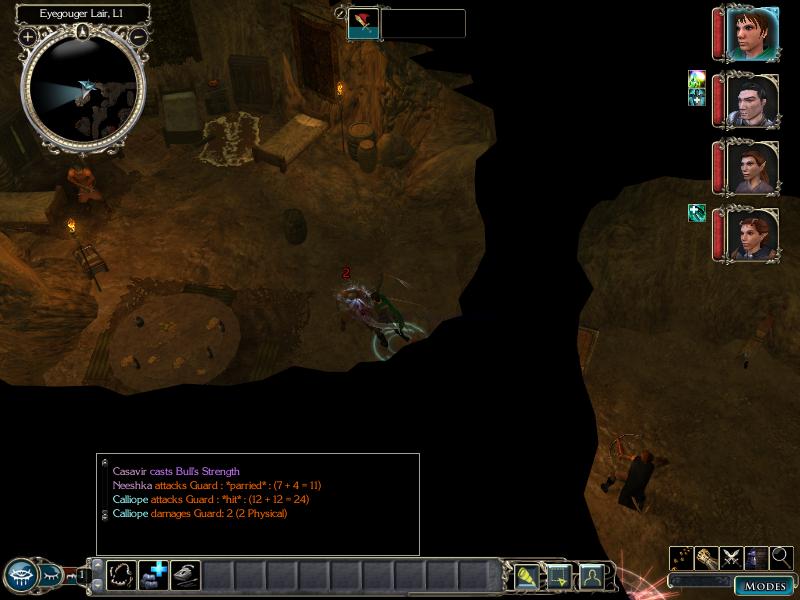
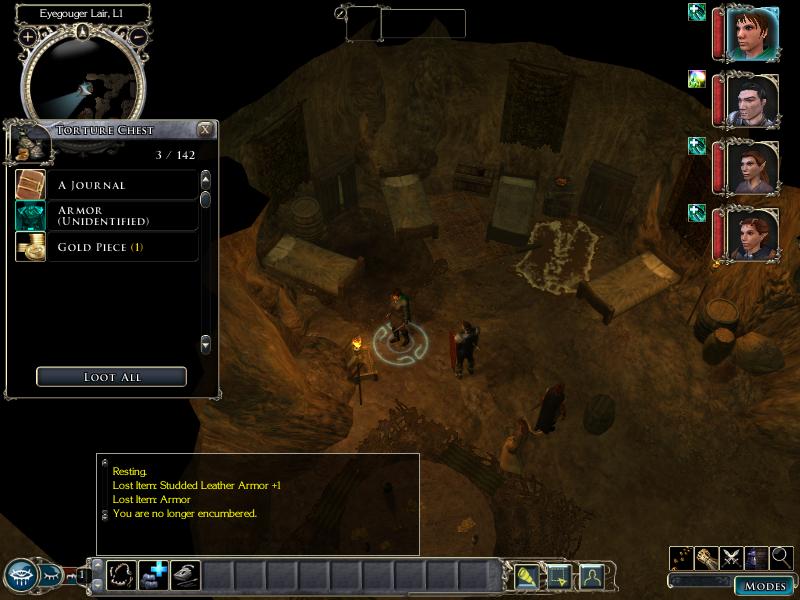
In Tolkien's writing, Orcs are of human shape, but smaller than Men, ugly, filthy, with a taste for manflesh. In a private letter, Tolkien describes
quote:
Subject #1
Name: Fallow of Waterdeep
Male subject, white hair, hook nose, balding. Captured along the High Road. Withstood torture for three days before dying.
Analysis: Resorted to physical torture too quickly. His mind was weak and would have been susceptible to mental torture.
Subject #2
Name: Kyleana of Waterdeep
Elven female, brown hair, overweight for an elf, physically weak. Captured near Helm's Hold. Mind snapped after four days of torture. Committed suicide.
Analysis: We could have turned her. Next time, the subject will be placed in an empty room to avoid another such incident.
Subject #3
Name: Unknown
Human female, elderly, with a sharp tongue. Killed during first session.
Analysis: I must learn to control my temper.
Subject #4
Name: Issani of Waterdeep
Human male, middle-aged, in good health. Surprisingly strong mind. Has withstood mental torture for a week now. I shall need to resort to physical torture to break him, and he will break. This one is quite a challenge.
Note to self: BG is growing impatient with my lack of progress. If I can break Issani, it will go a long way toward regaining BG's favour.
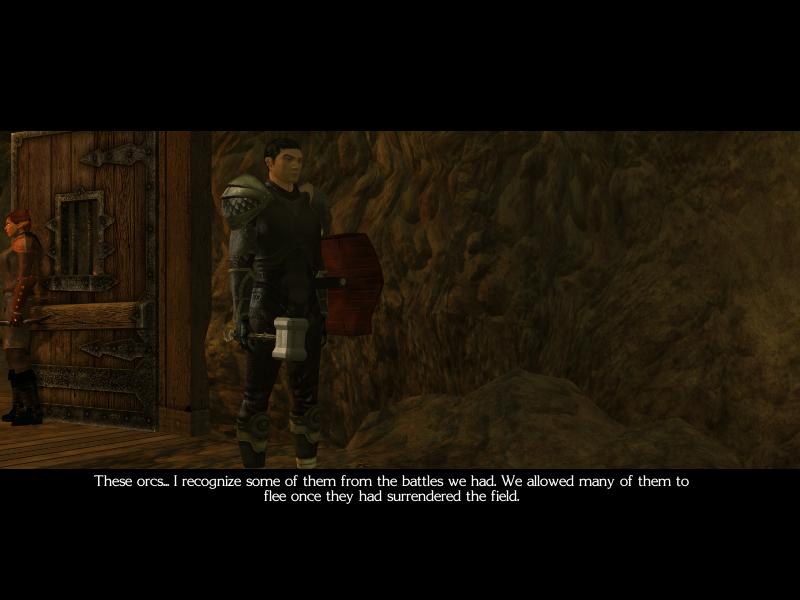
Orcs are used as soldiers by both the greater and lesser villains of The Lord of the Rings - Sauron and Saruman. Orcs eat all manner of flesh, includ
 : These orcs are in no shape to fight... they have seen too much of battle already.
: These orcs are in no shape to fight... they have seen too much of battle already. : The ground here is thick with their blood... and their pain.
: The ground here is thick with their blood... and their pain.
Orc origins are first described in The Tale of Tinúviel as "foul broodlings of Melko (Melkor) [sic] who fared abroad doing his evil work". In The Fa
 : These orcs are badly wounded. I doubt most of them will even survive the night.
: These orcs are badly wounded. I doubt most of them will even survive the night. : We kill them now.
: We kill them now. : If you feel you must. But this is not an act of mercy, but of revenge - and hate.
: If you feel you must. But this is not an act of mercy, but of revenge - and hate. : I think this is unwise... nature would have dealt with them for us. But I shall not stop you.
: I think this is unwise... nature would have dealt with them for us. But I shall not stop you.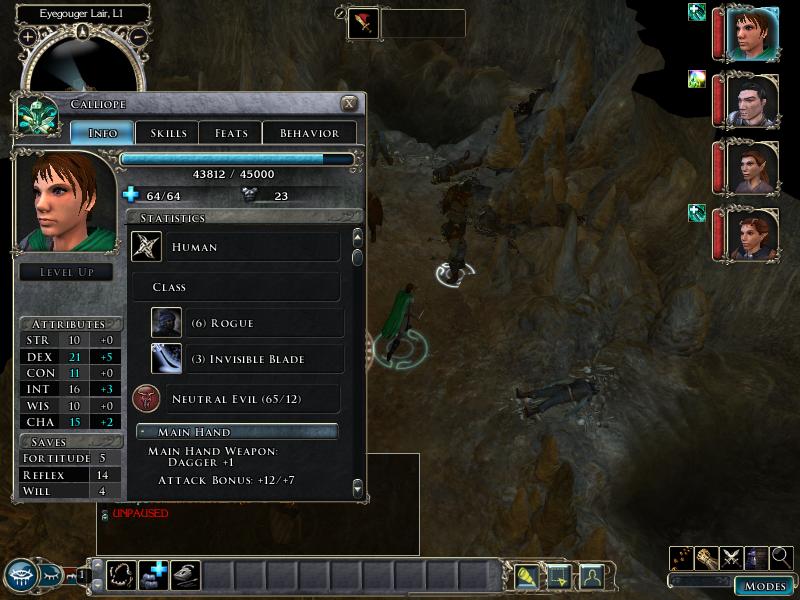
Since the publication of Tolkien's epic novel, The Lord of the Rings, creatures called "orcs" have become a fixture of fantasy fiction and role-play
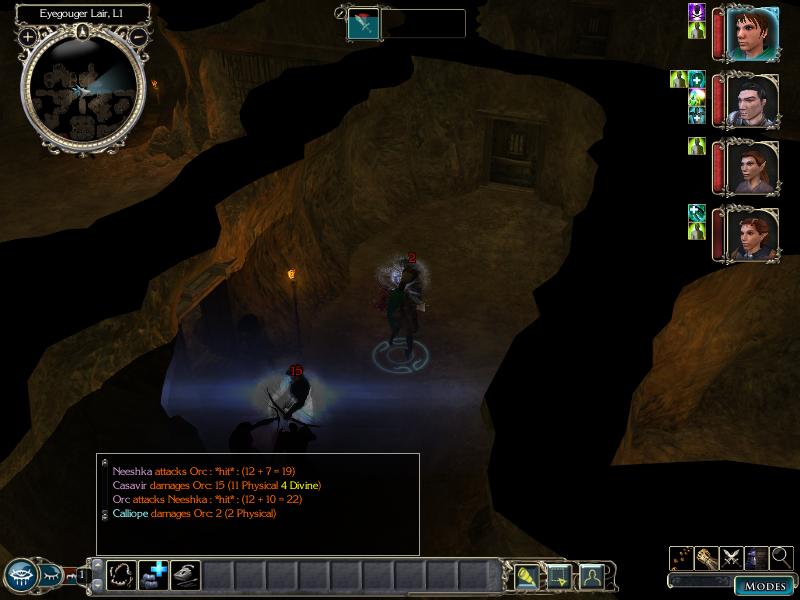
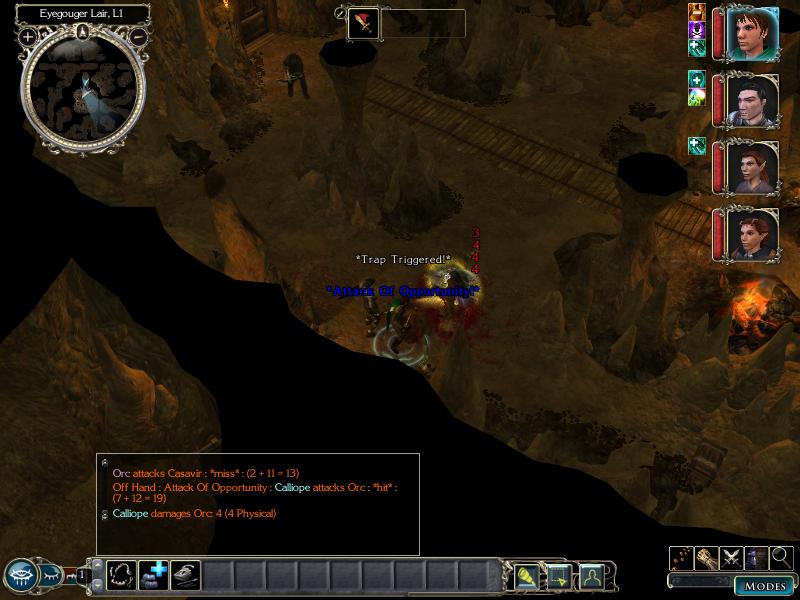
An alternative theory is that they were often depicted as pig-like due to the tusked and pig-like description of the orco (ogre) in Canto 17 of Arios
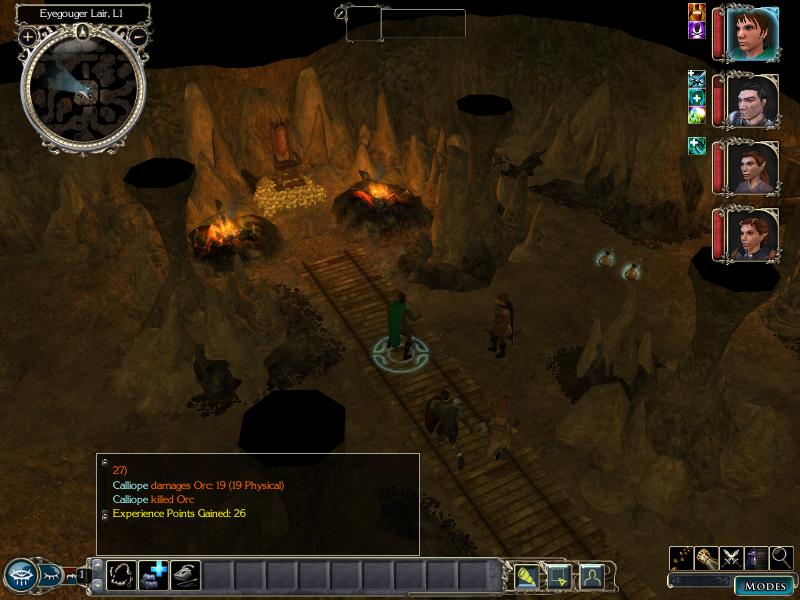
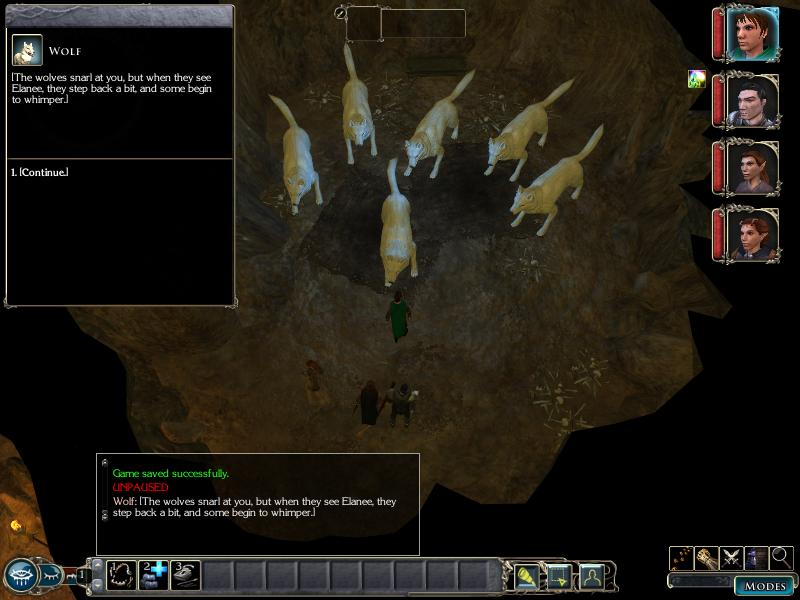
In the 1980s another orc archetype was introduced by the table-top miniature war games Warhammer Fantasy Battle; a heavily-muscled, green-skinned bar
 : They look like they're in pain. The orcs must be keeping them here, starving them so they'll attack intruders.
: They look like they're in pain. The orcs must be keeping them here, starving them so they'll attack intruders. : Then we'll finish them off.
: Then we'll finish them off. : No! Look... they're trapped here, probably by the orcs. Let's set them free - they don't want to hurt us.
: No! Look... they're trapped here, probably by the orcs. Let's set them free - they don't want to hurt us. : Can you speak to them?
: Can you speak to them? : Yes... I think so.
: Yes... I think so.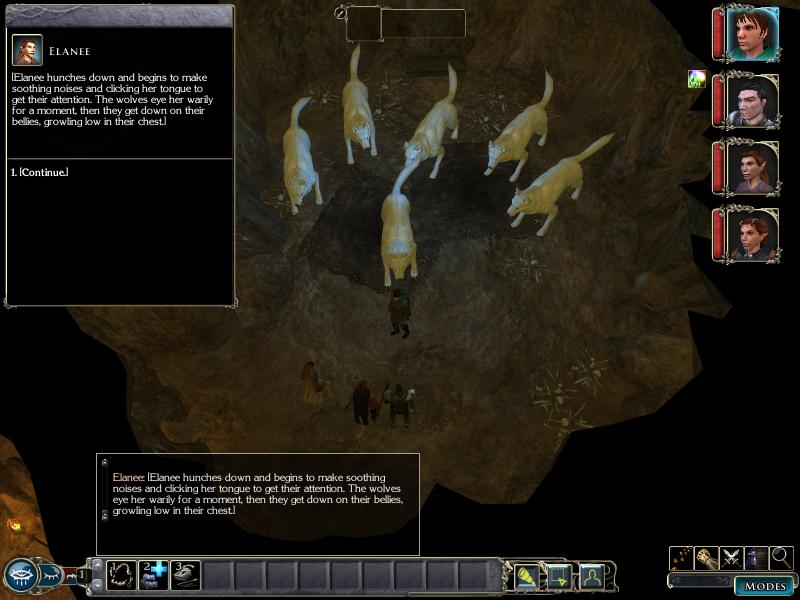
Games Workshop's Warhammer Fantasy and Warhammer 40,000 games feature Orcs as well (spelled Orks in Warhammer 40,000). The latter setting is unique f
 : The trick is to make yourself smaller, seem less threatening... and once they realize you mean no harm...
: The trick is to make yourself smaller, seem less threatening... and once they realize you mean no harm... : I keep getting images of the orcs here... there's two levels to this place, and it seems the one with the strongest scent... the orc leader, I think, stays on the level below.
: I keep getting images of the orcs here... there's two levels to this place, and it seems the one with the strongest scent... the orc leader, I think, stays on the level below. : But... they also caught another scent... I think another group of humans came through here, not long ago - and one was led to the lower level.
: But... they also caught another scent... I think another group of humans came through here, not long ago - and one was led to the lower level. : The wolves didn't like the humans much... their scent smelled of a city... but not Neverwinter - the smell seems different, dirtier, if possible.
: The wolves didn't like the humans much... their scent smelled of a city... but not Neverwinter - the smell seems different, dirtier, if possible. : Can they help us against the orcs?
: Can they help us against the orcs?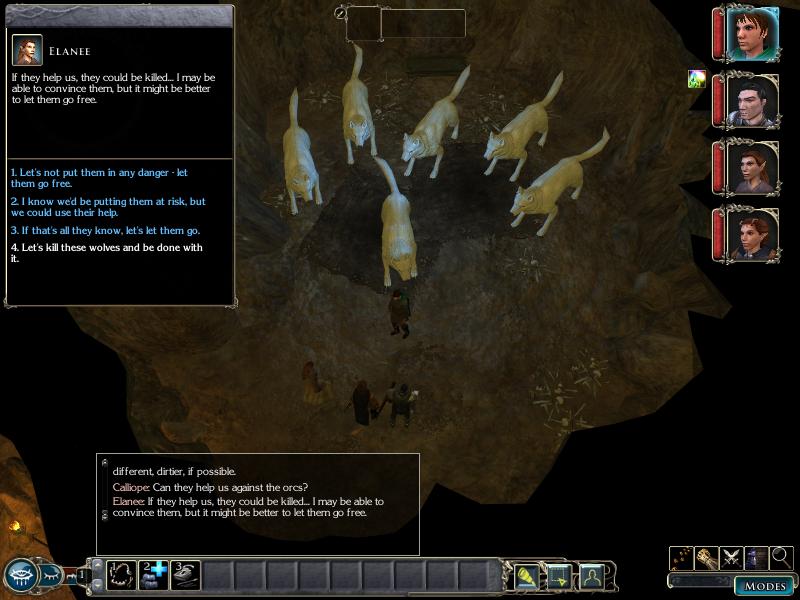
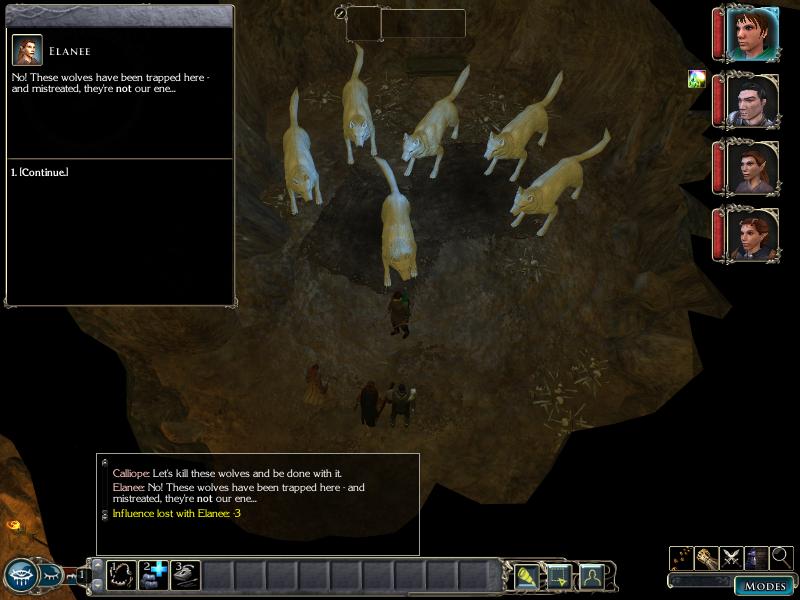
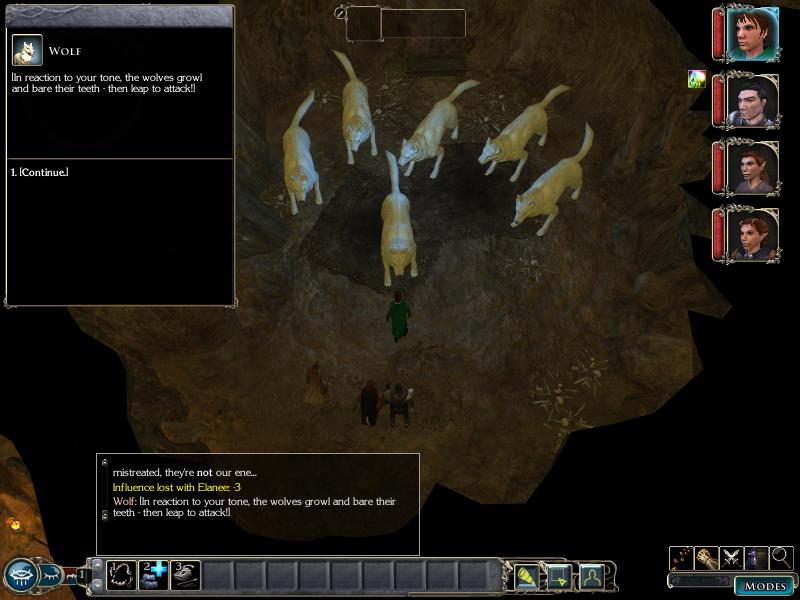
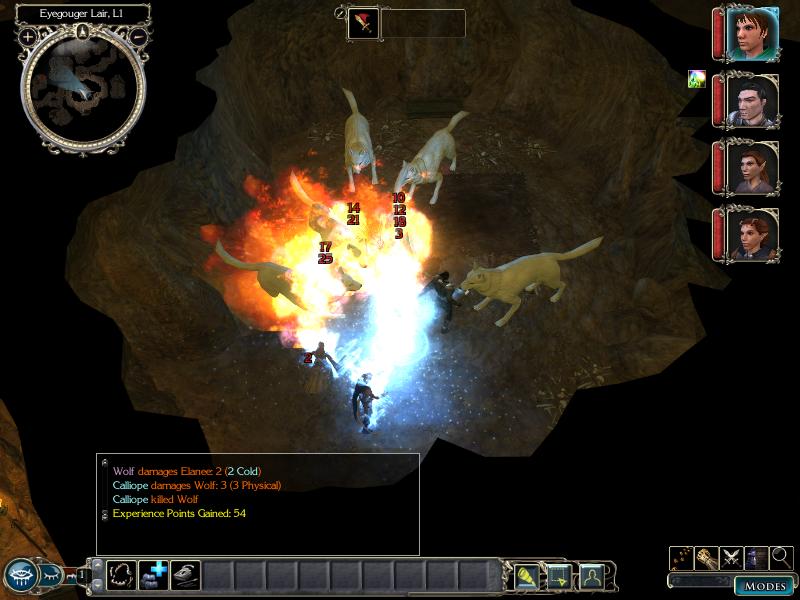
In the Warcraft computer game series Orcs are depicted as more ethically and socially complex than in most renditions. The great Orcish race is a sav
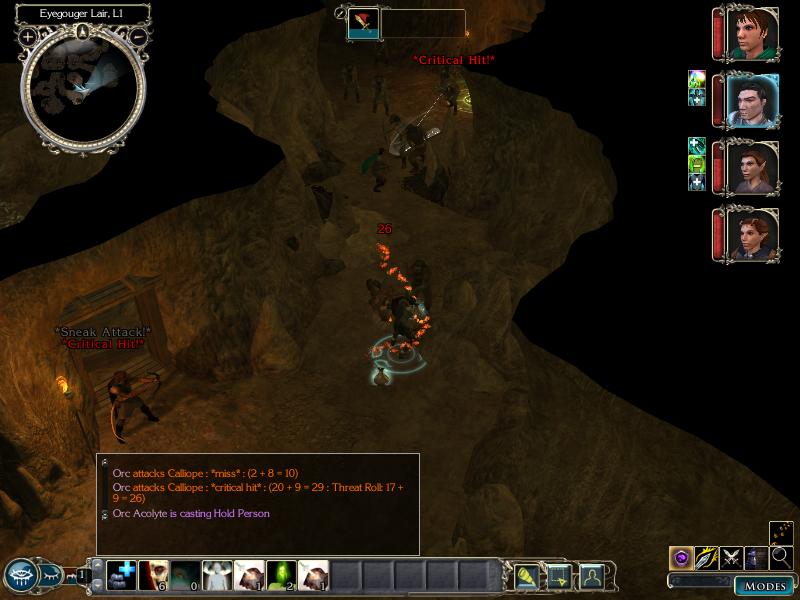

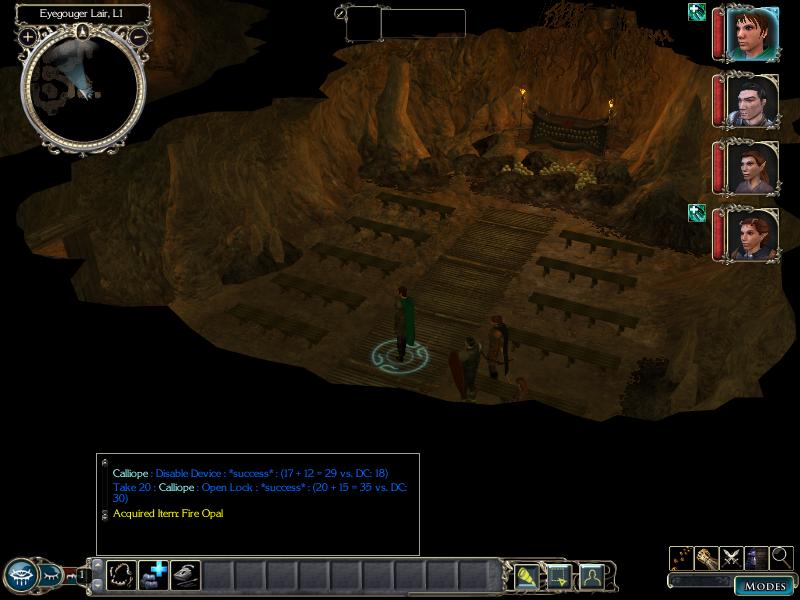
In the fantasy role-playing games Earthdawn and Shadowrun, orks are, in contrast to the common fantasy Orc, neither inherently good nor evil. In Eart
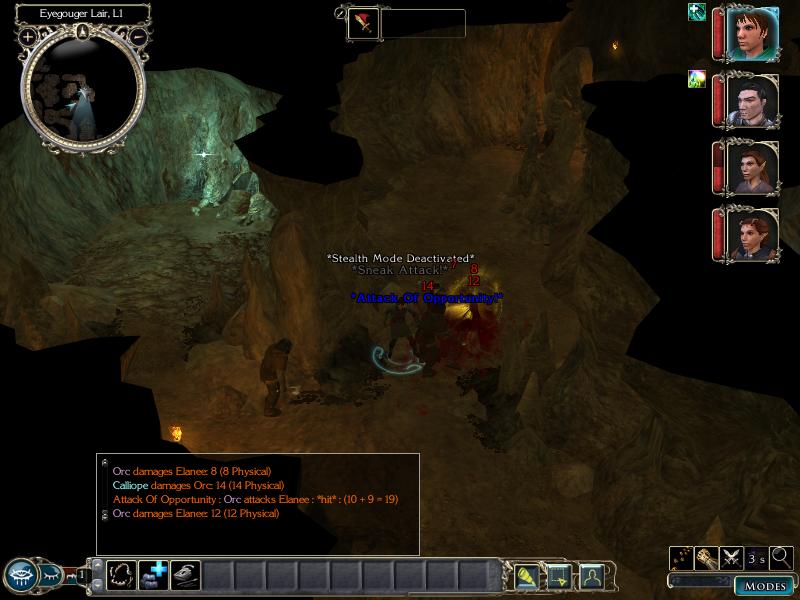
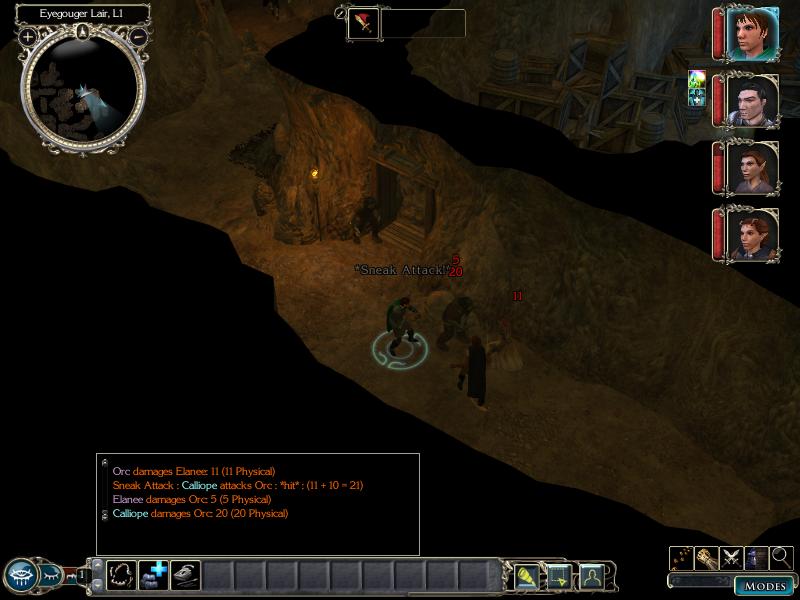
In the CCG Magic: The Gathering, Orcs are portrayed as generally cowardly warriors who relied extensively on the smaller, less intelligent Goblins wh
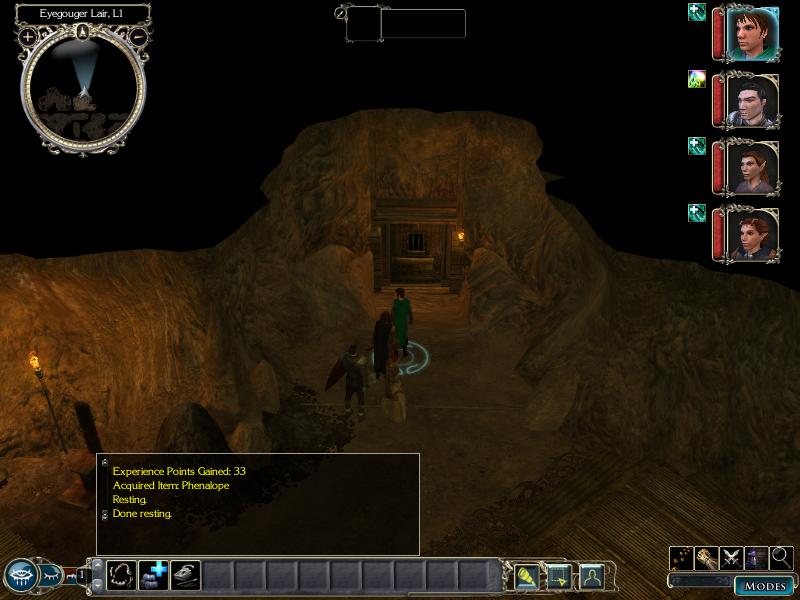
In the Might and Magic franchise, in the Kreegan universe, orcs are variously portrayed as orange, green, or brown. In Heroes of Might and Magic, the
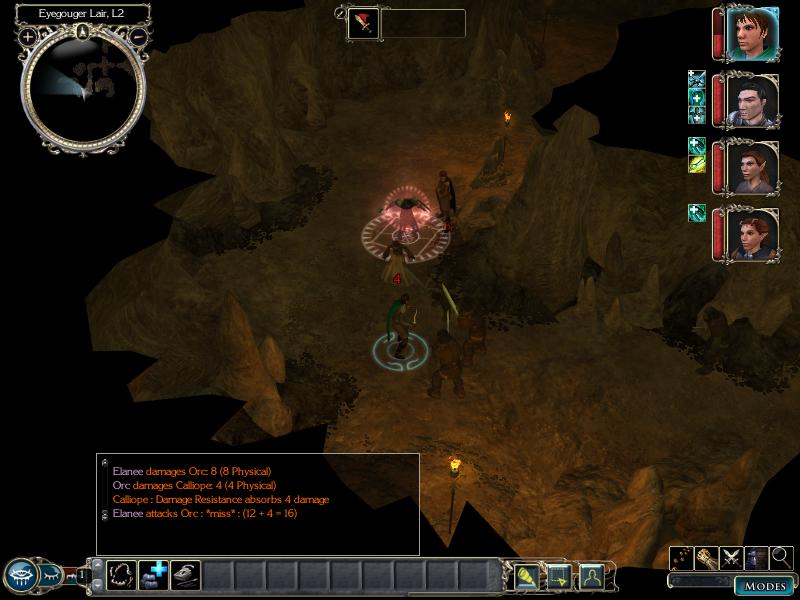
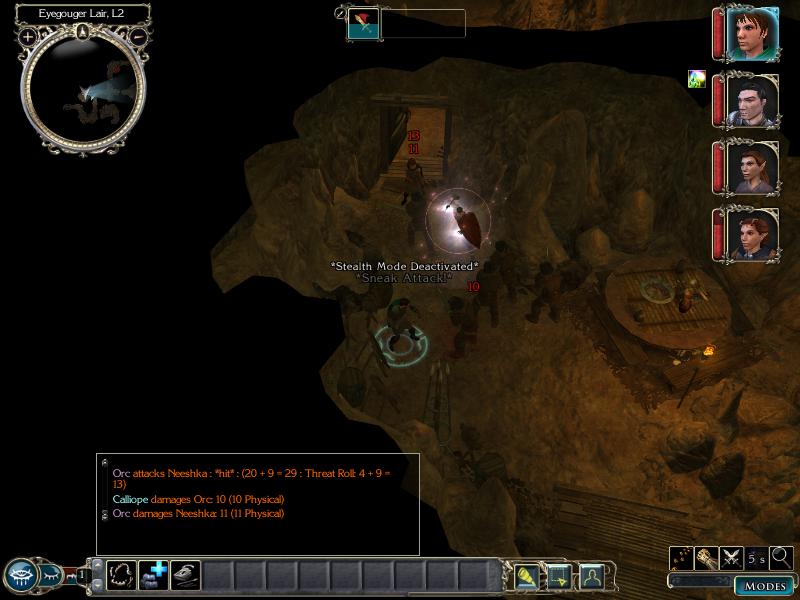
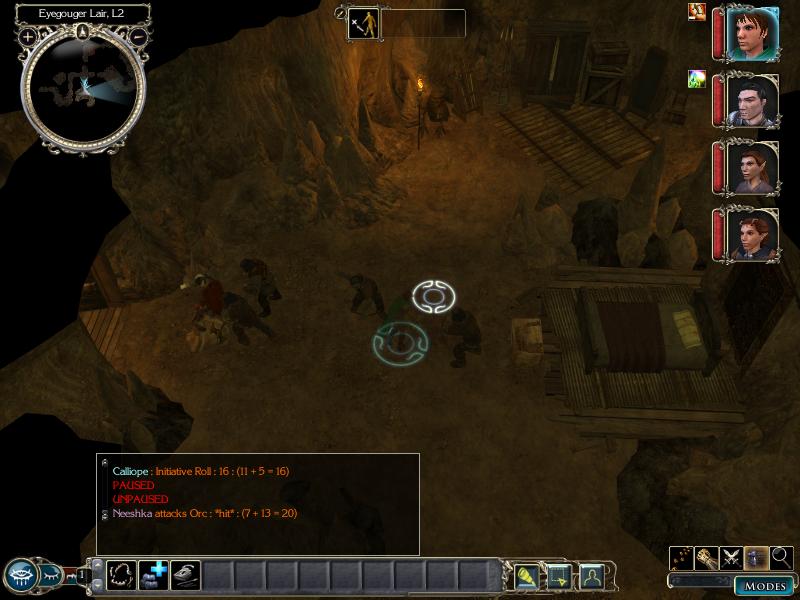
The orc was one of the earliest creatures introduced in the D&D game. The D&D orc is largely based upon the orcs appearing in the works of J.R.R. Tol
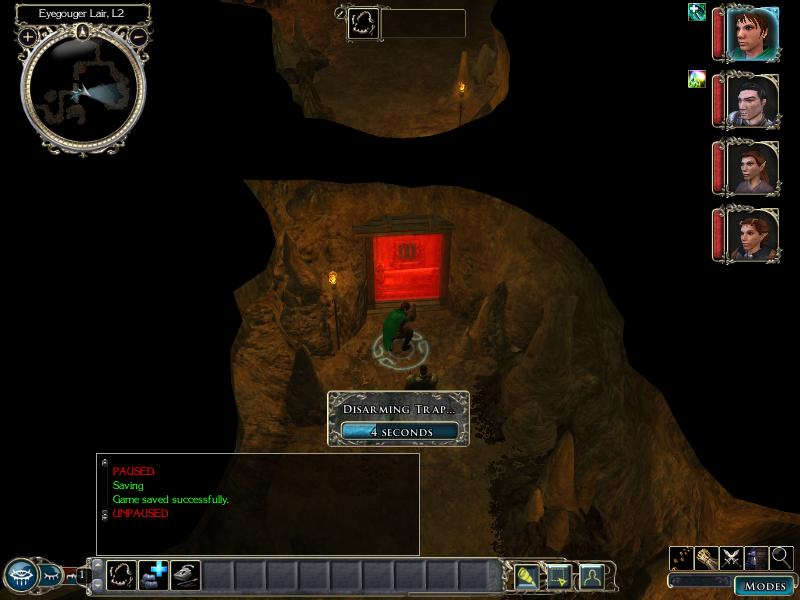
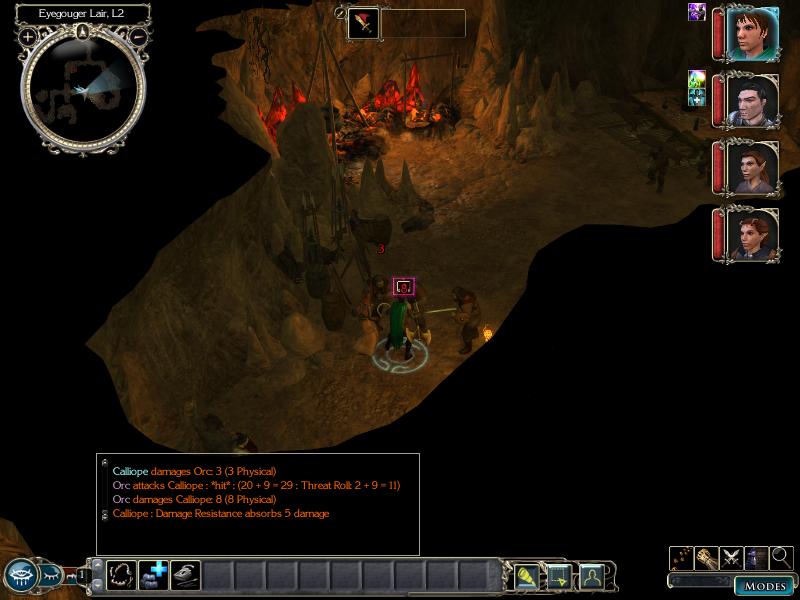
The gray orc is presented as a player character race for the Forgotten Realms setting in both Races of Faerûn (2003),[18] and Unapproachable East (20
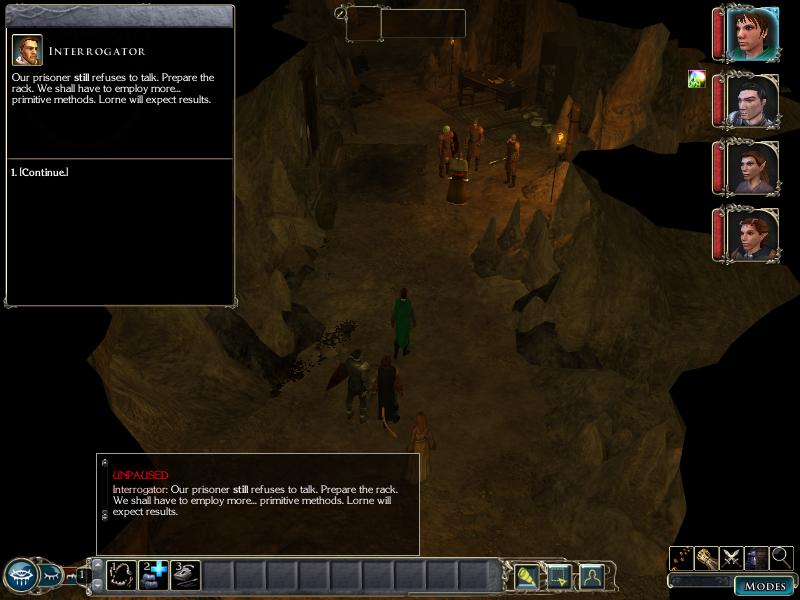
The aquatic orc, the arctic orc, the desert orc, the jungle orc, the orc paragon, and the water orc were all introduced in Unearthed Arcana (2004).[1
 : At once, sir. We'll break him eventually.
: At once, sir. We'll break him eventually. : Only then can he be turned. If he cannot be turned, then we will have to find Lorne another emissary to strike within Neverwinter's walls.
: Only then can he be turned. If he cannot be turned, then we will have to find Lorne another emissary to strike within Neverwinter's walls.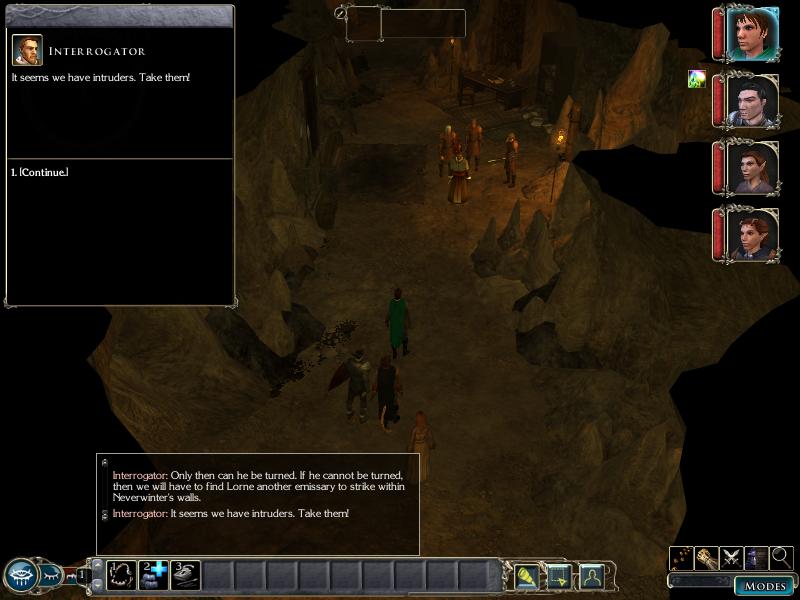
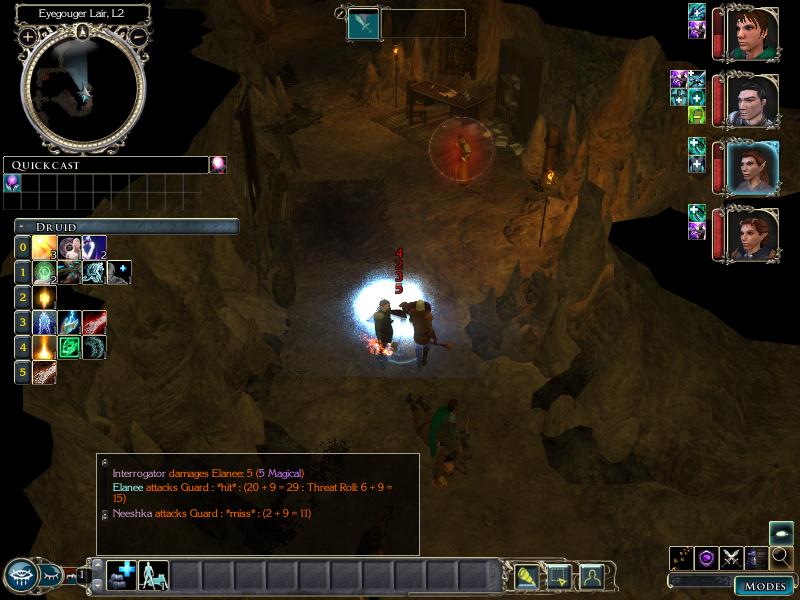
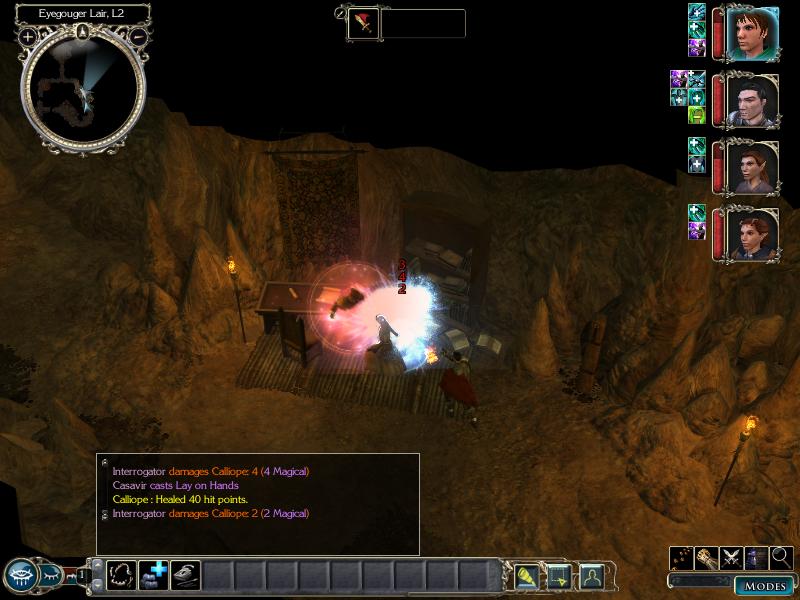
Orcs are disfigured humanoid carnivores, standing approximately 5'11 to 6'2, weighing from 180 to 280 lbs. They are easily noticeable due to their gr
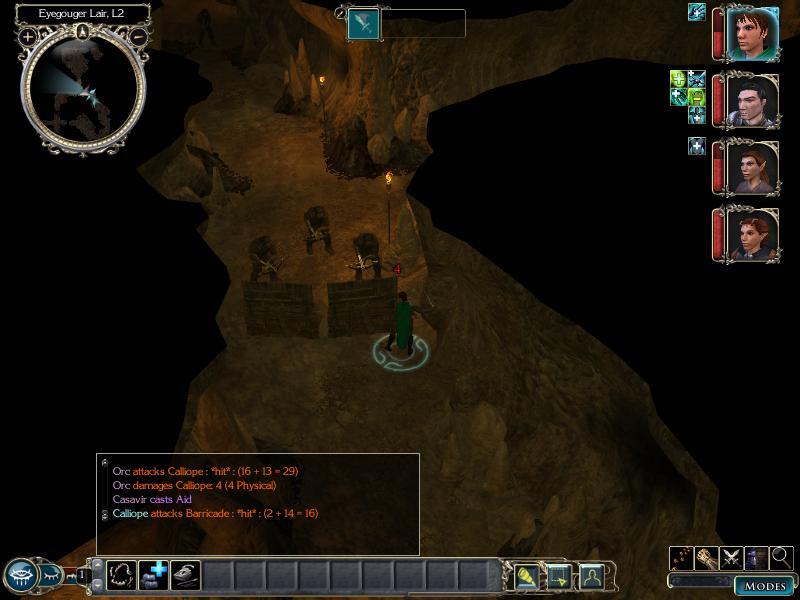

Bestial and savage, orcs band together as trıbes, living on hunting and raiding. Believing that the only way to survive is by expanding their territo
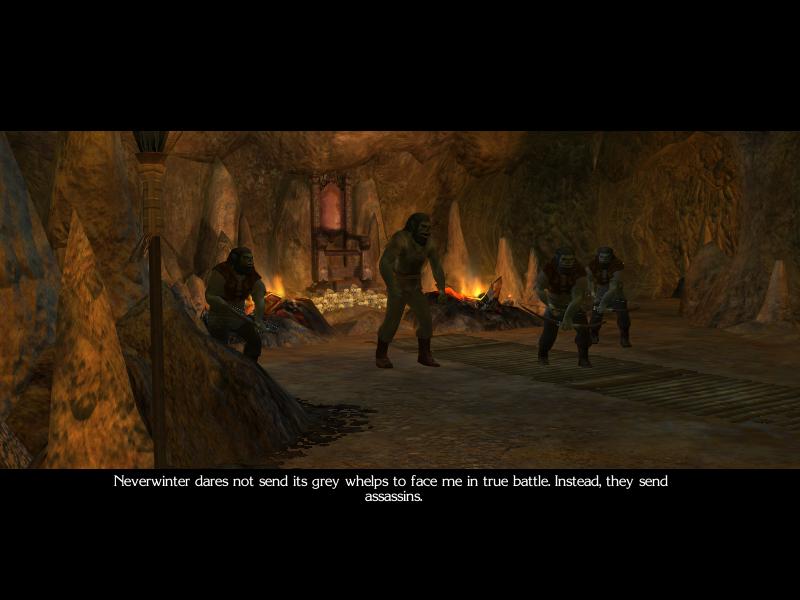
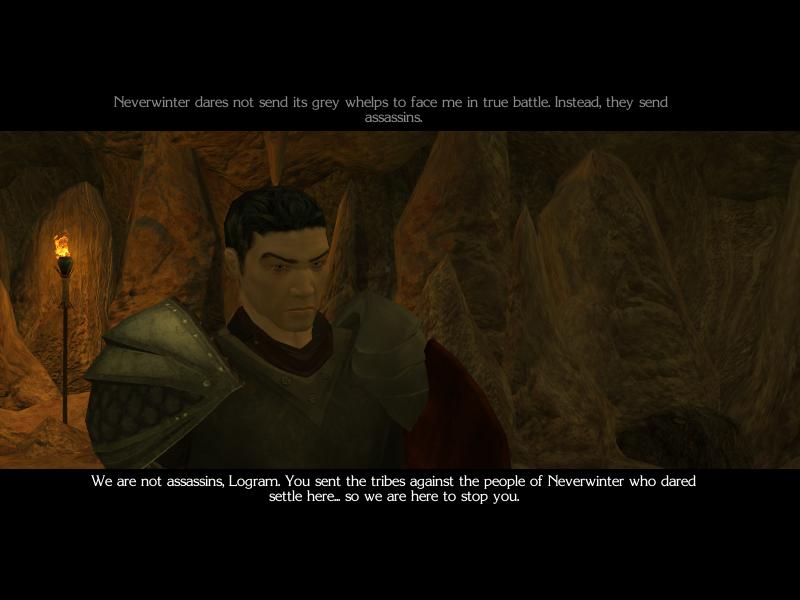
Orcs like scars and take pride in exposing them, whether they are of a victory or loss. Their chief deity Gruumsh claims that the orc is the top of t
 : So - the katalmach, the one who has been attacking us, giving the grey whelps time to rest between each assault... why my men fear to face you in battle is hard to see.
: So - the katalmach, the one who has been attacking us, giving the grey whelps time to rest between each assault... why my men fear to face you in battle is hard to see. : You die here now, katalmach,, you and this one from Neverwinter who leads you. Are you ready to die, human?
: You die here now, katalmach,, you and this one from Neverwinter who leads you. Are you ready to die, human?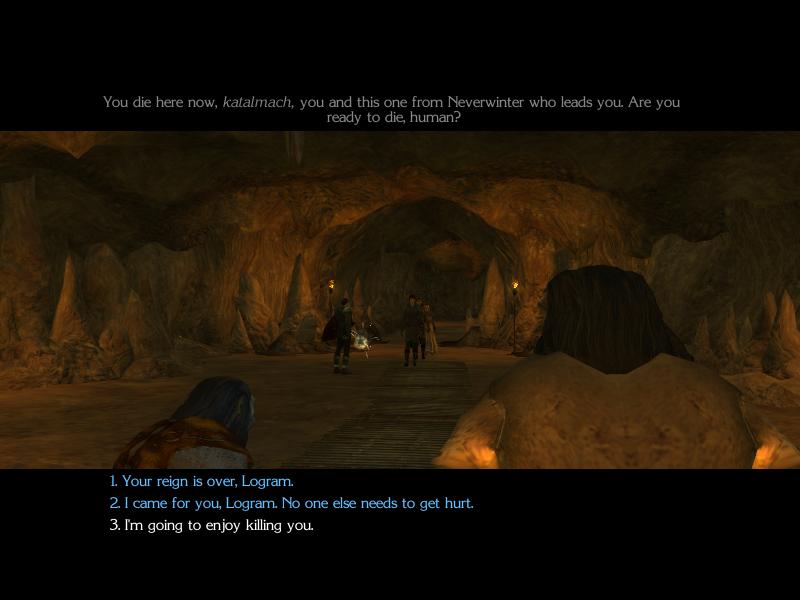
Orcs speak Orcish, a language derived from older human and elvish languages. There is no common standard of Orcish, so the language has many dialects
 : And how will you kill me if you're dead?
: And how will you kill me if you're dead? : Know that Yaisog has betrayed you. The coward warned me of you and has helped me prepare.
: Know that Yaisog has betrayed you. The coward warned me of you and has helped me prepare.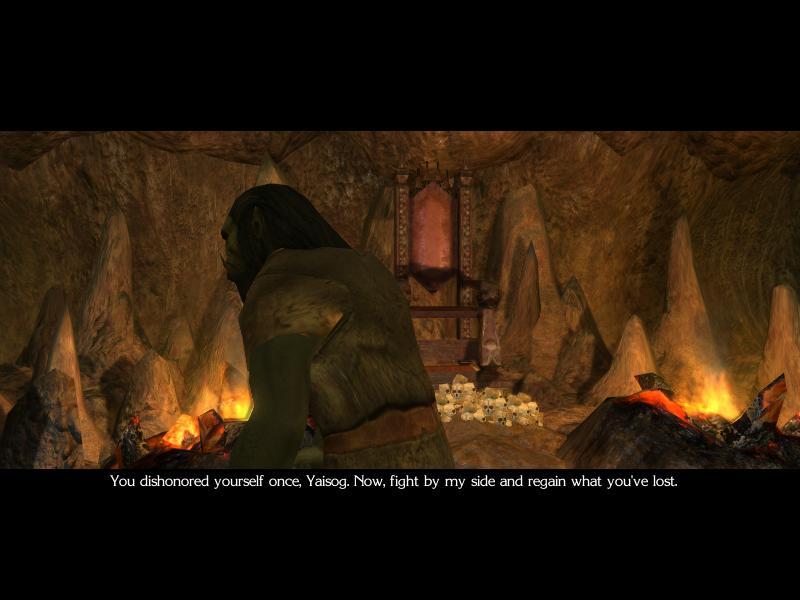
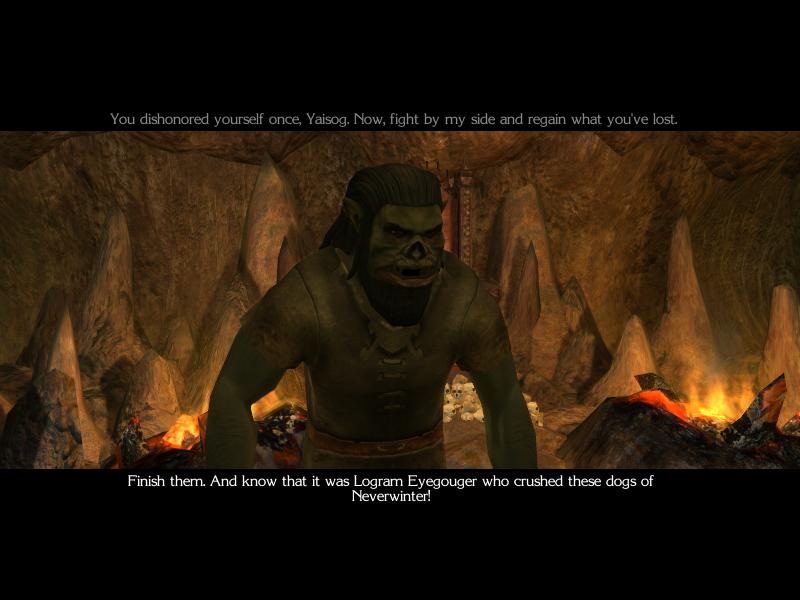
Earlier versions of Dungeons & Dragons depicted orcs slightly differently. They were Lawful Evil, and were sometimes described as having porcine snou
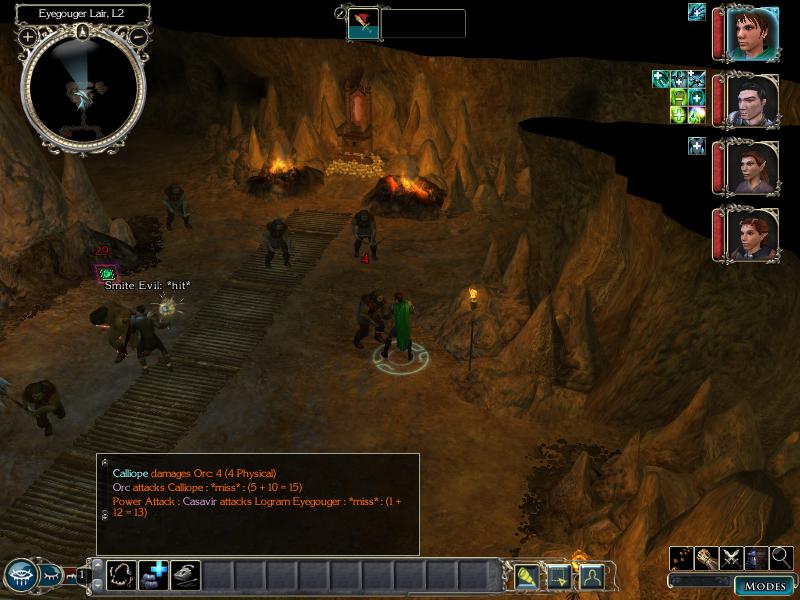
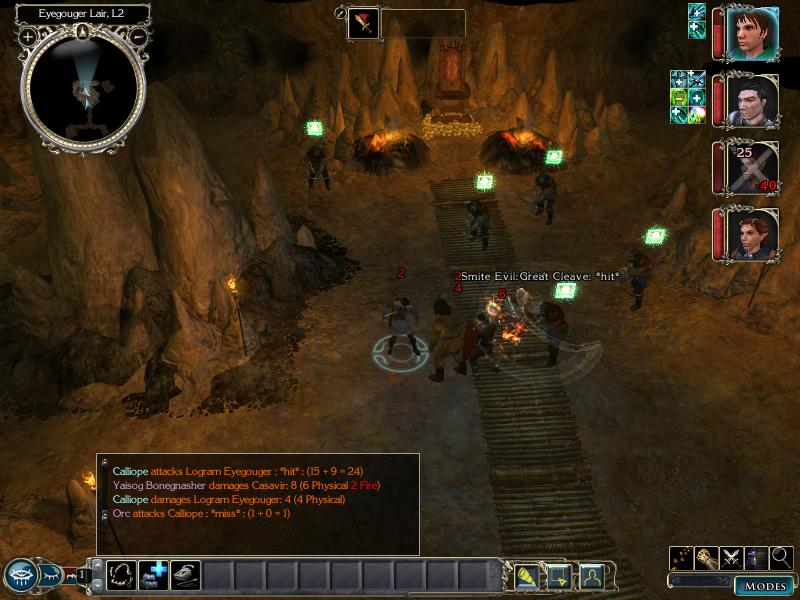
In the Forgotten Realms campaign setting, orcs are divided into the orcs of the north (Mountain Orcs) and the orcs of the east (Gray Orcs). The gray

In the north, orcs are known for overbreeding and then spilling out in hordes upon the nations thereabouts, including the Silver Marches, Icewind Dal
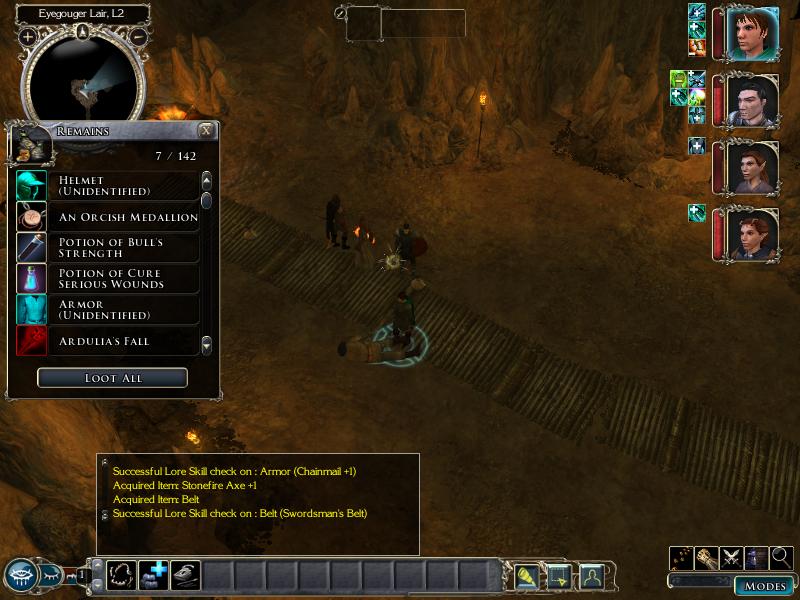
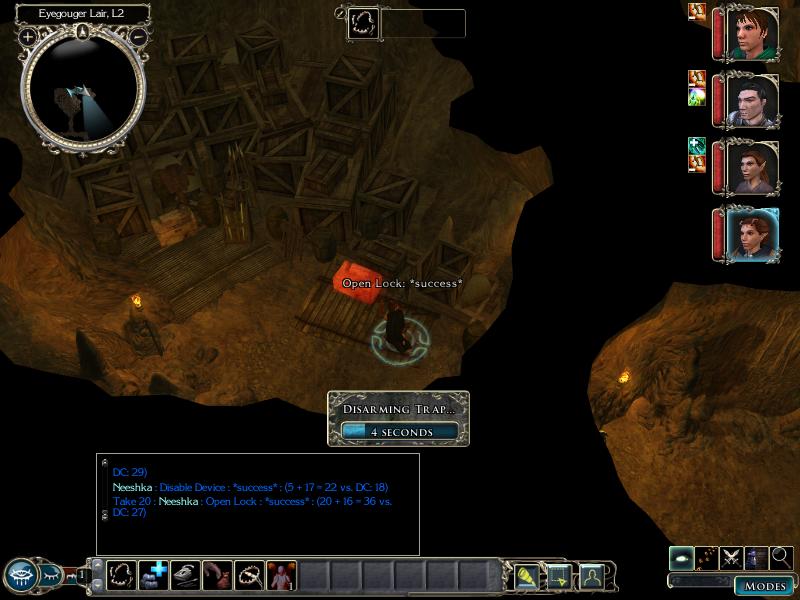
Following the precedents set in the earliest Dungeons & Dragons materials, a great many d20 System publishers have retained Orcs in their own works.
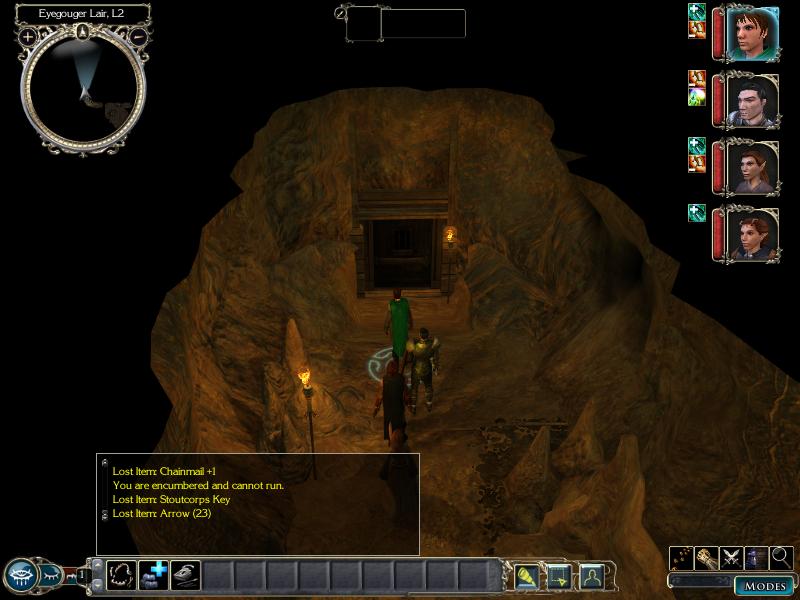
The orc was ranked first among the ten best low-level monsters by the authors of Dungeons & Dragons For Dummies. They describe the orc as "The iconic man-beast savage... simply the classic adversary for a low-level hero."